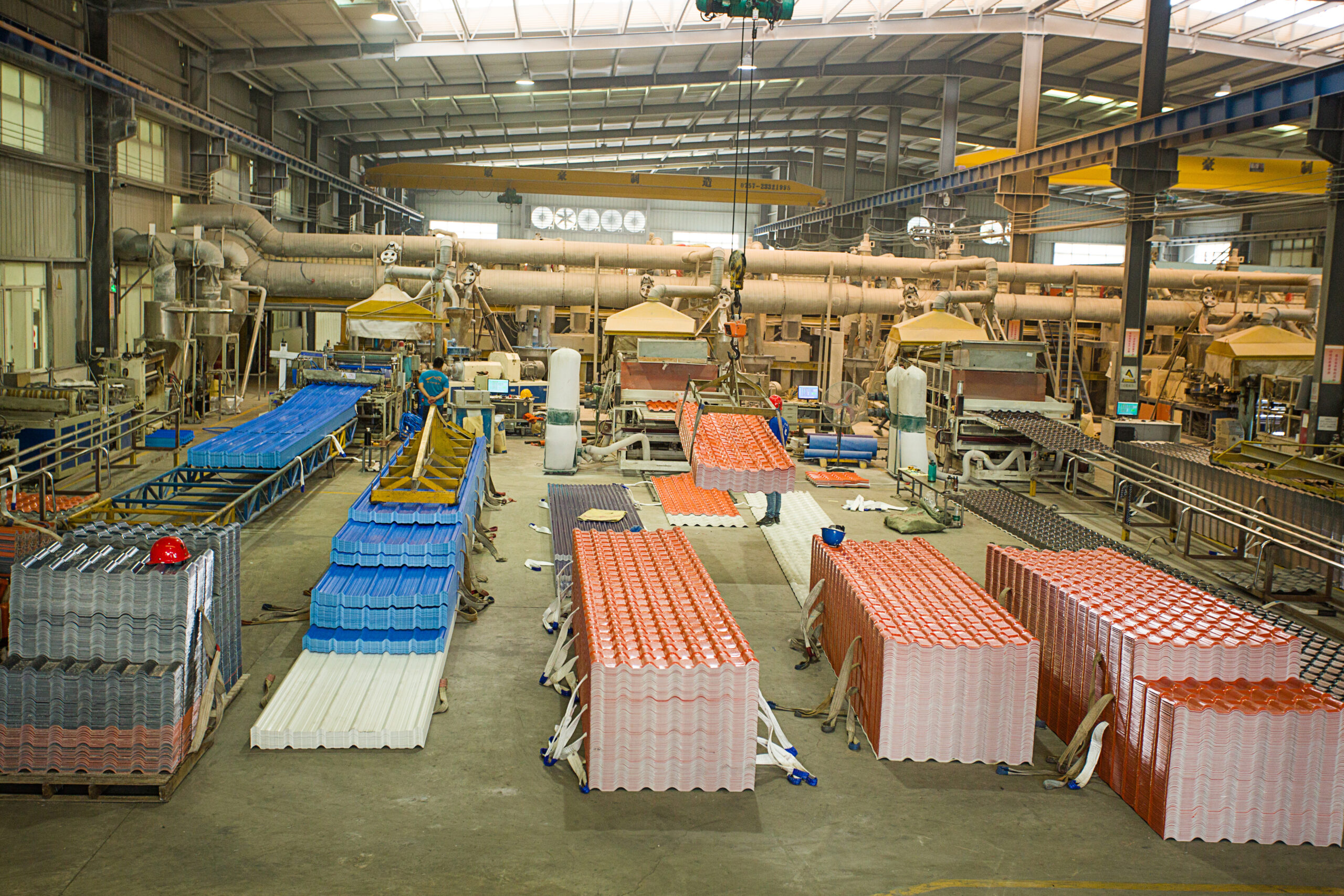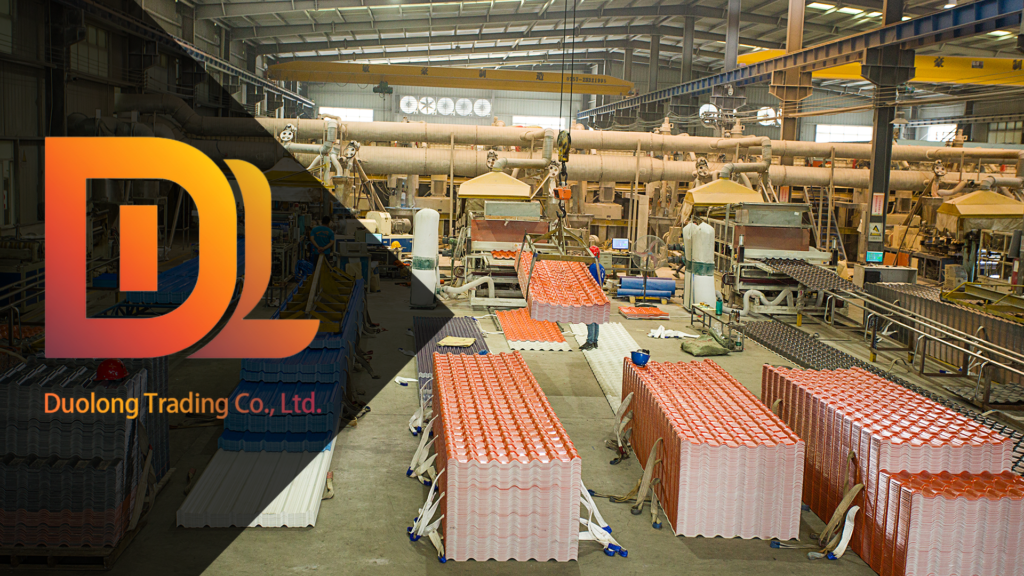In tropical and coastal regions like Thailand, Vietnam, and the UAE, roofing materials must withstand extreme humidity, heavy rainfall, and high salinity in the air. While metal roofs have been a conventional choice, plastic roof sheets—especially ASA synthetic resin tiles and APVC composite panels—are increasingly favored by importers, wholesalers, and government project contractors. The shift is driven by better corrosion resistance, lower logistics costs, and simplified installation. For B2B buyers, this is not a simple style preference, but a strategic material choice that affects long-term durability, maintenance, and project ROI. In this article, we’ll compare plastic roof sheets and metal roofs across five core dimensions to help coastal construction decision-makers choose the smarter option.
Installation and Logistics Efficiency: Why Plastic Sheets Offer Real Advantage
For large-scale coastal projects, installation speed and transportation efficiency are key factors in material selection. Plastic roof sheets, such as ASA and APVC panels, are significantly lighter than metal roofs, making them easier to handle, cut, and install on-site. They require no heavy equipment or specialized labor, which helps reduce overall construction costs—especially in regions where skilled roofing labor is limited. Additionally, their flexible packaging and resistance to deformation mean they’re easier and safer to transport in bulk across Southeast Asia or the Middle East. In contrast, metal roofs are heavier, bulkier, and prone to denting or bending during shipping, often leading to increased damage rates and higher logistics expenses. For importers and wholesalers dealing with containerized shipments, plastic roofing offers lower freight cost per square meter and simpler warehouse handling.
Corrosion Resistance and Long-Term Durability: The Coastal Climate Test
In tropical coastal environments, roofing materials are constantly exposed to salt-laden air, intense UV radiation, and high humidity. These harsh conditions can significantly reduce the lifespan of traditional metal roofs. Even galvanized or coated metal sheets are prone to rust, especially at joints and fastener holes, unless regularly maintained with anti-rust treatments. Plastic roof sheets, particularly ASA synthetic resin and APVC composite tiles, offer excellent resistance to corrosion and UV degradation. Their chemical structure is inherently non-metallic, which means they won’t rust or oxidize—even after years of exposure. This makes them ideal for projects like coastal warehouses, seaside housing, and government-funded infrastructure where durability and maintenance cost are critical factors. For B2B buyers focused on long-term project ROI, plastic roofing provides a more reliable, weather-resistant solution under tropical and marine conditions.
Cost and Freight Efficiency: Maximize Value per Square Meter
For B2B buyers in Southeast Asia and the Middle East, project profitability often hinges on two key factors: product cost and freight efficiency. Plastic roof sheets, such as ASA and APVC types, are not only lower in raw material cost than metal roofing, but also deliver major savings in logistics. Their lightweight nature allows for more square meters per shipping container, which translates to lower cost per square meter delivered. Additionally, plastic sheets are less prone to deformation or scratching during long-distance transport, reducing loss rates and returns. For bulk buyers working with 20ft or 40ft containers, this can mean thousands of dollars saved per shipment. In contrast, metal roofing tends to be heavier, more rigid, and more expensive to load, unload, and store—especially in countries with limited warehouse space or labor costs rising. For wholesalers, importers, and distributors, plastic roofing provides not just a better unit price, but an overall cost advantage across the supply chain.

Thermal Insulation and Structural Flexibility: Designed for Tropical Demands
Heat buildup is a major concern for buildings in tropical regions. Metal roofs, by nature, conduct and retain heat, making indoor spaces significantly hotter during peak sunlight hours. This often forces building owners to rely on air conditioning, increasing energy consumption and operational costs. Plastic roof sheets, especially ASA synthetic resin and PVC-based panels, offer better thermal insulation thanks to their non-metallic structure and heat-resistant surface layers. They help reduce indoor temperatures by 3–5°C in tropical conditions, improving comfort for residential and commercial spaces alike.
Additionally, plastic roofing is highly adaptable to different architectural forms—arched walkways, multi-slope roofs, domes, and even decorative exterior installations. The materials can be cut and shaped easily without affecting performance, giving developers and designers more flexibility in executing aesthetic or functional designs. Metal roofs, by contrast, are harder to customize on-site, require complex installation tools, and often limit the creative freedom in structural planning.

Maintenance and Lifecycle Cost: Low Upkeep, High Returns
For coastal or tropical construction projects, long-term maintenance is a major factor in material selection. Metal roofing, though durable in structure, is prone to surface rust, coating peeling, and edge corrosion—especially in salty and humid environments. These issues require regular repainting, rust-proof treatments, and inspections, which add up to significant maintenance costs over the years. For large commercial or government buildings, these costs can escalate quickly across multiple rooftops.
In contrast, plastic roof sheets such as ASA and APVC types require little to no maintenance once installed. Their surfaces do not oxidize, crack, or peel, even after prolonged exposure to sun, rain, or sea breeze. Cleaning is simple and infrequent—typically done with water. This not only saves money, but also reduces the need for trained maintenance labor, which is especially valuable in remote or labor-scarce areas. For B2B buyers focused on lifecycle value, plastic roofing significantly reduces the total cost of ownership over 10–15 years of use.
Real-World Project Case: Coastal Government Housing in the Philippines
In early 2024, a government-led housing project was launched in Cebu, Philippines, aiming to provide affordable yet durable homes along the coast for low-income families. The project initially considered galvanized metal roofing due to its availability, but after a pilot installation showed signs of edge rust and excessive heat buildup within three months, the contractor reassessed the material selection.
DuolongTrade supplied over 50,000 square meters of ASA synthetic resin tiles for the project’s second phase. The plastic roofing sheets were chosen for their corrosion resistance, heat insulation, and lightweight transportability—ideal for coastal logistics. After 12 months of real-world exposure to tropical rains, salt-laden winds, and strong UV radiation, post-installation inspections confirmed: no warping, no color fading, and no leakage.
The project manager noted that the homes installed with plastic roofing were up to 4°C cooler indoors, and that maintenance requests dropped by over 80% compared to the metal-roofed pilot houses. Based on these results, the material was adopted as standard for the remaining phases of the project, demonstrating how a B2B supplier’s product quality can directly influence national-scale infrastructure outcomes.

Conclusion and Procurement Guidance: A Smarter Roofing Choice for Coastal Buyers
For developers, wholesalers, importers, and contractors working in coastal or tropical regions, the choice between plastic and metal roofing is more than a technical specification—it’s a long-term investment decision. While metal roofs still serve well in certain inland or industrial projects, their limitations in corrosion resistance, installation complexity, and lifecycle cost make them less ideal for salt-heavy, high-UV environments.
Plastic roof sheets—especially ASA and APVC types—offer clear advantages: easier logistics, better heat insulation, virtually no corrosion, and long-term savings in maintenance. In government housing, coastal warehouses, resort buildings, or retail chain expansions, plastic roofing proves to be a more efficient and future-ready solution.
At DuolongTrade, we supply high-quality synthetic resin tiles with SGS/ISO/CE certifications, flexible customization, and full container shipping support to Southeast Asia, the Middle East, and Africa. Whether you’re planning your next project or looking to upgrade your current supply chain, our team is ready to provide technical data, samples, and pricing to help you make a confident, cost-effective choice.


